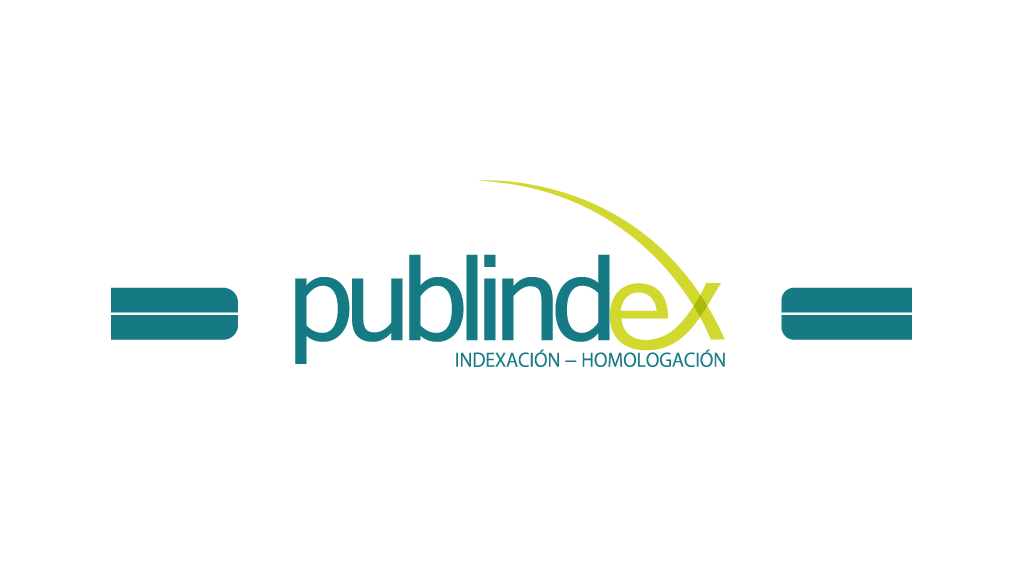Authors who publish in this journal agree to the following terms:
Acta Colombiana de Psicología complies with international intellectual property and copyright laws, and particularly with Article No. 58 of the Political Constitution of Colombia, Law No. 23 of 1982, and the Agreement No. 172 of September 30, 2010 (Universidad Católica de Colombia Intellectual Property Regulation).
Authors retain their copyright and grant to the Acta Colombiana de Psicología the right of first publication, with the work registered under Creative Commons attribution license, which allows third parties to use the published material, provided they credit the authorship of the work and the first publication in this Journal.
Abstract
Depression, anxiety and anger trait have been shown to be factors related to poor prognosis in patients with cardiovascular disease. A sample of 168 patients with ischemic heart disease that have had a cardiac event in the last month (age: Mean = 64 years, SD = 11; 66.7 % men) was evaluated to verify the existence of negative affect as a common factor among the previous emotions in these patients. Patients answered the Spielberger depression, anxiety and anger trait questionnaires. Exploratory factorial analyses were carried out to confirm the factorial structure of the scales. Confirmatory factor analysis confirmed the existence of negative affect as a higher order factor (X2 = 3.42, p > .05; CFI > .95, TLI > .95, SRMS < .05). These results suggest that it is important to consider dimensional models for the treatment of emotions in this population.

References
Agudelo, D. M., Gómez, Y., & López, P. L. (2014). Propiedades psicométricas del Inventario de Depresión Estado/Rasgo (IDER) con una muestra de población general colombiana. Avances en Psicología Latinoamericana, 32(1), 71-84. doi: 10.12804/apl32.1.2014.05
Alarcón, R., & Ramírez, E. (2006). Medicina psicosomática en enfermedad cardiovascular: consideraciones clínicas. Revista Colombiana de Psiquiatria, 35, 112-124.
American Heart Association. (2010). Risk factors and Coronary Artery Disease. Recuperado de http://www.american-heart.org/presenter.jhtmlidentifier=4726
American Psychiatric Association. (2013). Diagnostic andStatistical Manual of Mental Disorders, Fifth Edition (DSM 5). Arlington, VA: American Psychiatric Association.
Bleil, M. E., Gianaros, P. J., Jennings, J. R., Flory, J. D., & Manuck, S. B. (2008). Trait negative affect: toward an integrated model of understanding psychological risk for impairment in cardiac autonomic function. Psychosomatic Medicine, 70(3), 328-337.
Bloch, L., Moran, E. K., & Kring, A. M. (2010). On the need for conceptual and definitional clarity in emotion regulation research on psychopathology. En A. M. King & D. M. Sloan (Eds.), Emotion Regulation and Psychopathology. A Transdiagnostic Approach to Etiology and Treatment (pp. 88-104). New Yourk: The Guilford Press.
Boehm, J. K., & Kubzansky, L. D. (2012). The heart's content: The association between positive psychological well-being and cardiovascular health. Psychological Bulletin, 138(4), 655-691. doi: 10.1037/a0027448
Brown, T. A., & Barlow, D. H. (2009). A proposal for a dimensional classification system based on the shared features of the DSM-IV anxiety and mood disorders: implications for assessment and treatment. Psychological assessment, 21(3), 256.
Brunner, E. J., Shipley, M. J., Britton, A. R., Stansfeld, S. A., Heuschmann, P. U., Rudd, A. G., ... Kivimaki, M. (2014). Depressive disorder, coronary heart disease, and stroke: dose-response and reverse causation effects in the Whitehall II cohort study. European journal of preventive cardiology, 21(3), 340-346. doi: 10.1177/2047487314520785
Byrne, B. M. (2012). Structural Equation Modeling with M-Plus. New York: Routledge.
Celano, C. M., Suarez, L., Mastromauro, C., Januzzi, J. L., & Huffman, J. C. (2013). Feasibility and Utility of Screening for Depression and Anxiety Disorders in Patients With Cardiovascular Disease. Circulation: Cardiovascular Quality and Outcomes, 6, 498-504. doi: https://doi.org/10.1161/CIRCOUTCOMES.111.000049
Chauvet-Gelinier, J. C., & Bonin, B. (2017). Stress, anxiety and depression in heart disease patients: A major challenge for cardiac rehabilitation. Annals of Physical and Rehabilitation Medicine, 60(1), 6-12. doi: https://doi.org/10.1016/j.rehab.2016.09.002
Chida, Y., & Steptoe, A. (2009). The association of anger and hostility with future coronary heart disease: a meta-analytic review of prospective evidence. Journal of the American College ofCardiology, 53(11), 936-946. doi: 10.1016/j.jacc.2008.11.044
Clark, L. A. (2005). Temperament as a unifying basis for personality and psychopathology. Journal of Abnormal Psychology, 114(4), 505-521. doi: 10.1037/0021-843X.114.4.505
Clark, L. A., & Watson, D. (1988). Mood and the mundane: Relations between daily life events and self-reported mood. Journal of Personality and Social Psychology, 54(2), 296-308. doi: 10.1037/0022-3514.54.2.296
Denollet, J., & Pedersen, S. S. (2009). Anger, depression, and anxiety in cardiac patients: the complexity of individual differences in psychological risk. Journal of the American College ofCardiology, 53(11), 947-949. doi: 10.1016/j.jacc.2008.12.006
Fonseca-Pedrero, E., Paino, M., Sierra-Baigrie, S., Lemos-Giráldez, S., & Muñiz, J. (2012). Propiedades psicométricas del Cuestionario de ansiedad estado-rasgo (STAI) en universitarios. Behavioral Psychology-Psicología Conductual, 20(3), 547-561.
Garcia-Padilla, A. K., Lara-Vargas, E. J., & Albarracín-Rodríguez, A. P. (2016). Análisis Psicométrico del Staxi-2 Y Ml-Staxi en Adultos del Área Metropolitana de Bucaramanga. Cuadernos Hispanoamericanos de Psicología, 16(2), 33-44.
Guyton, A. C., & Hall, J. E. (2006). Fisiologia médica. España: Elsevier.
Karaslavova, E., Dyakova, M., Todorova, D., & Tufkova, S. (2009). Psychosomatic correlates of coronary heart disease during the socio-economic crisis of post-communist Bulgaria. Central European Journal of Medicine, 4(1), 91-97. doi: 10.2478/s11536-008-0078-y
Kline, R. (2010). Principles and practice of structural equation modeling. New York: The Guilford Press.
Kubzansky, L. D., Davidson, K. W., & Rozanski, A. (2005). The clinical impact of negative psychological states: expanding the spectrum of risk for coronary artery disease. Psychosomatic Medicine, 67(Supplement 1), S10-S14. doi:10.1097/01.psy.0000164012.88829.41
Kubzansky, L. D., & Kawachi, I. (2000). Going to the heart of the matter:do negative emotions cause coronary heart disease? Journal of Psychosomatic Research, 48(4-5), 323-337. doi: 10.1016/S0022-3999(99)00091-4
Kubzansky, L. D., & Thurston, R. C. (2007). Emotional vitality and incident coronary heart disease: benefits of healthy psychological functioning. Archives of General Psychiatry, 64(12), 1393-1401. doi:10.1001/archpsyc.64.12.1393
Lanas, F., Avezum, A., Bautista, L. E., Diaz, R., Luna, M., Islam, S., & Yusuf, S. (2007). Risk factors for acute myocardial infarction in Latin America. Circulation, 115(9), 1067-1074. doi: 10.1161/CIRCULATIONAHA.106.633552
Lichtman, J. H., Froelicher, E. S., Blumenthal, J. A., Carney, R. M., Doering, L. V., Frasure-Smith, N., ... Wulsin, L. (2014). Depression as a Risk Factor for Poor Prognosis Among Patients With Acute Coronary Syndrome: Systematic Review and Recommendations: A Scientific Statement From the American Heart Association. Circulation, 129(12), 1350-1369. doi: 10.1161/CIR.0000000000000019
Little, T. D., Rhemtulla, M., Gibson, K., & Schoemann, A. M. (2013). Why the items versus parcels controversy needn't be one. Psychological Methods, 18(3), 285-300. doi: 10.1037/a0033266
McEwen, B. S., Nasveld, P., Palmer, M., & Anderson, R. (2012). Allostatic Load. A Review of the Literature. Australia: Department of Veteran's Affairs.
Miguel-Tobal, J. J., Casado, M. I., Cano-Vindel, A., & Spielberger, C. D. (2001). Manual del Inventario de Expresión de Ira Estado-Rasgo (STAXI-2). Madrid: TEA Ediciones.
Ministerio de Salud y Protección Social. (2016). Análisis de Situación de Salud. Colombia. Bogotá: Imprenta Nacional de Colombia.
Moriondo, M., Palma, P., Medrano, L., & Murillo, P. (2011). Adaptación de la Escala de Afectividad Positiva y Negativa (PANAS) a la población de Adultos de la ciudad de Córdoba: Análisis Psicométricos Preliminares. Universitas Psychological, 11(1), 187-196.
Moser, D. K., McKinley, S., Riegel, B., Doering, L. V., Meischke, H., Pelter, M., ... Dracup, K. (2011). Relationship of Persistent Symptoms of Anxiety to Morbidity and Mortality Outcomes in Patients With Coronary Heart Disease. Psychosomatic Medicine, 73(9), 803-809. doi: 10.1097/PSY.0b013e3182364992
Muthén, L. K., & Muthén, B. O. (2010). Mplus User's Guide: Statistical Analysis with Latent Variables: User's Guide. Los Angeles: Muthén & Muthén.
Penninx, B. W. J. H. (2017). Depression and cardiovascular disease: Epidemiological evidence on their linking mechanisms. Neuroscience & Biobehavioral Reviews, 74 (Parte B), 277-286. doi: https://doi.org/10.1016/j.neubiorev.2016.07.003
Perez, E. R., & Medrano, L. (2010). Análisis factorial exploratorio: bases conceptuales y metodológicas. Revista Argentina de Ciencias del Comportamiento, 2, 58-66.
Polikandrioti, M., & Olympios, C. (2014). Anxiety and coronary artery disease. Archives of Hellenic Medicine, 31(4), 403-411.
Posner, J., Russell, J. A., & Peterson, B. S. (2005). The circumplex model of affect: An integrative approach to affective neuroscience, cognitive development, and psychopathology. Development and psychopathology, 17(03), 715-734. doi: 10.1017/S0954579405050340
Rafanelli, C., Sirri, L., Grandi, S., & Fava, G. A. (2013). Is Depression the Wrong Treatment Target for Improving Outcome in Coronary Artery Disease? Psychotherapy andpsychosomatics, 82(5), 285-291. doi: 10.1159/000351586
Reddy, P., Dunbar, J. A., Morgan, M. A. J., & O'Neil, A. (2008). Coronary heart disease and depression: getting evidence into clinical practice. Stress and health, 24(3), 223-230. doi: 10.1002/smi.1201
Robles, R., & Páez, F. (2003). Estudio sobre la traducción al español y las propiedades psicométricas de las escalas de afecto positivo y negativo (PANAS). Salud mental, 26(1), 69-75.
Sanchez-Gonzalez, M. A., May, R. W., Koutnik, A. P., & Fincham, F. D. (2015). Impact of negative affectivity and trait forgiveness on aortic blood pressure and coronary circulation. Psychophysiology, 52, 296-303. doi: 10.1111/psyp.12325
Sandín, B., Chorot, P., Lostao, L., Joiner, T. E., Santed, M. A., & Valiente, R. M. (1999). Escala PANAS de afecto positivo y negativo: validación factorial y convergencia transcultural. Psicothema, 11 (1), 37-51.
Schott, L. L., Kamarck, T. W., Matthews, K. A., Brockwell, S. E., & Sutton-Tyrrell, K. (2009). Is brachial artery flow-mediated dilation associated with negative affect? International Journal of Behavioral Medicine, 16(3), 241-247. doi: 10.1007/sl2529-009-9038-4
Simms, L. J., Grõs, D. F., Watson, D., & O'Hara, M. W. (2008). Parsing the general and specific components of depression and anxiety with bifactor modeling. Depression and Anxiety, 25(7), E34-E46. doi: 10.1002/da.20432
Smith, P. J., & Blumenthal, J. A. (2011). Aspectos psiquiátricos y conductuales de la enfermedad cardiovascular: epidemiología, mecanismos y tratamiento. Revista Española de Cardiología, 64(10), 924-933. doi: 10.1016/j.recesp.2011.06.003
Spielberger, C. D., Buela-Casal, G., & Agudelo, D. M. (2008). IDER, inventario de depresión estado-rasgo: Manual. Madrid: TEA Ediciones.
Spielberger, C. D., Gorsuch, R. L., & Lushene, R. E. (1970). Handbook of STAI. Palo Alto: CA: Consulting Psychologist Press [Adaptación al español: Seisdedos, N.(1988) Barcelona: TEA Ediciones].
Spielberger, C. D., Gorsuch, R. L., Lushene, R. E., & Seisdedos, N. (1999). STAI: Cuestionario de ansiedad estado-rasgo. Madrid: TEA Ediciones.
Torquato Jr, M. A. A., de Souza, B. P. F., Iosifescu, D. V., & Fraguas, R. (2012). Anger, Hostility and Other Forms of Negative Affect: Relation to Cardiovascular Disease. En M. Atiq (Ed.), Recent Advances in Cardiovascular Risk Factors (pp. 415-436). Sao Paulo, Brasil: INTECH Open Access Publisher.
Tully, P. J., & Penninx, B. W (2012). Depression and Anxiety Among Coronary Heart Disease Patients: Can Affect Dimensions and Theory Inform Diagnostic Disorder-Based Screening? Journal of clinical psychology, 68(4), 448-461. doi: 10.1002/jclp.21828
Vera-Villarroel, P., Buela-Casal, G., Celis-Atenas, K., Córdova-Rubio, N., Encina-Olea, N., & Spielberger, C. D. (2008). Chilean experimental version of the State-Trait Depression Questionnaire (ST-DEP): Trait sub-scale (T-DEP). International Journal of Clinical and Health Psychology, 8(2), 563-575.
Watkins, L. L., Koch, G. G., Sherwood, A., Blumenthal, J. A., Davidson, J. R. T., O'Connor, C., & Sketch, M. H. (2013). Association of Anxiety and Depression With All-Cause Mortality in Individuals With Coronary Heart Disease. Journal of the American Heart Association, 2(2), e000068. doi: 10.1161/JAHA.112.000068
Watson, D., & Clark, L. A. (1992). Affects separable and inseparable: On the hierarchical arrangement of the negative affects. Journal of Personality and Social Psychology, 62(3), 489 - 505. doi: 10.1037/0022-3514.62.3.489
Watson, D., Clark, L. A., & Carey, G. (1988). Positive and negative affectivity and their relation to anxiety and depressive disorders. Journal of Abnormal Psychology, 97(3), 346. doi: 10.1037/0021-843X.97.3.346
Watson, D., Clark, L. A., & Stasik, S. (2011). Emotions and the emotional disorders: a quantitative hierrarchical perspective. International Journal of clinical and Health Psychology, 11(3), 429 - 442. Recuperado de http://www.redalyc.org/html/337/33719289001/
Watson, D., Clark, L. A., & Tellegen, A. (1984). Cross-cultural convergence in the structure of mood: A Japanese replication and a comparison with US findings. Journal of Personality and Social Psychology, 47(1), 127-144. doi: 10.1037/0022-3514.47.1.127
Watson, D., Clark, L. A., & Tellegen, A. (1988). Development and validation of brief measures of positive and negative affect: the PANAS scales. Journal of personality and social psychology, 54(6), 1063-1070. doi: 10.1037/0022-3514.54.6.1063
Watson, D., & Walker, L. M. K. (1996). The long-term stability and predictive validity of trait measures of affect. Journal of Personality and Social Psychology, 70(3), 567-577.
Werner, K., & Gross, J. J. (2010). Emotion Regulation and Psychopathology. En A. M. Kring & D. M. Sloan (Eds.), Emotion Regulation and Psychopathology. A Transdiagnostic Approach to Etiology and Treatment (pp. 13-37). New York: The Guilford Press.
WHO. (2011). Global atlas on cardiovascular disease prevention and control 2011 (S. Mendis, P. Puska, & B. Norrving Eds.). France: WHO Press.
Yusuf, S., Hawken, S., âunpuu, S., Dans, T., Avezum, A., Lanas, F., ... Varigos, J. (2004). Effect of potentially modifiable risk factors associated with myocardial infarction in 52 countries (the INTERHEART study): case-control study. The Lancet, 364(9438), 937-952. doi: 10.1016/S0140-6736(04)17018-9































